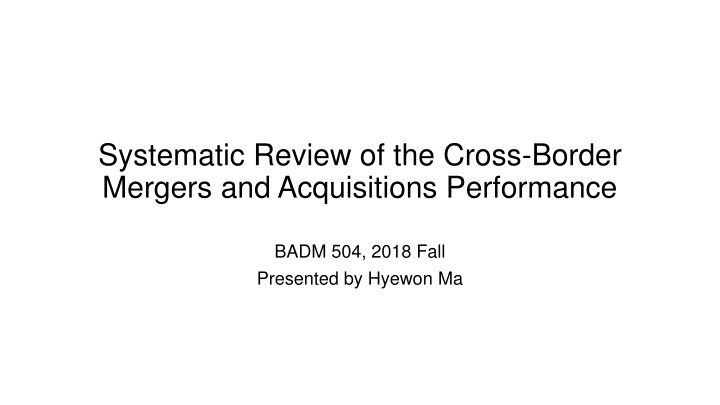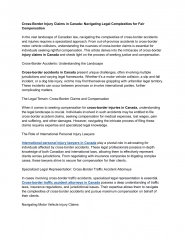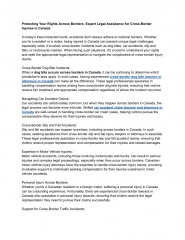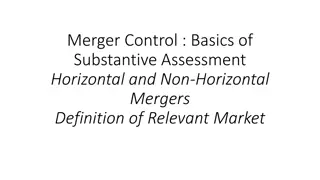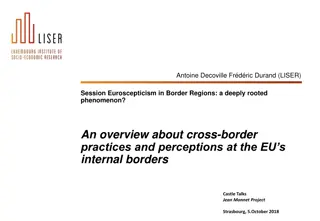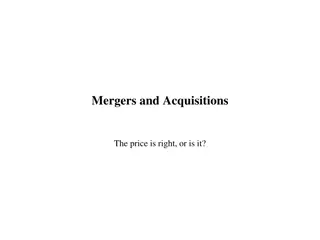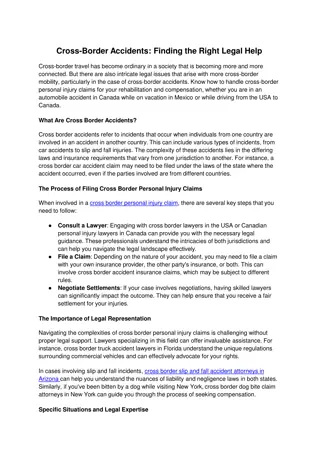Systematic Review of Cross-Border Mergers & Acquisitions Performance
Delve into the performance of cross-border mergers and acquisitions through an in-depth analysis of various dependent variables and theories, exploring the impact of factors such as stock market reactions, long-term premiums, survival rates, legal frameworks, cultural differences, and more.
Download Presentation

Please find below an Image/Link to download the presentation.
The content on the website is provided AS IS for your information and personal use only. It may not be sold, licensed, or shared on other websites without obtaining consent from the author.If you encounter any issues during the download, it is possible that the publisher has removed the file from their server.
You are allowed to download the files provided on this website for personal or commercial use, subject to the condition that they are used lawfully. All files are the property of their respective owners.
The content on the website is provided AS IS for your information and personal use only. It may not be sold, licensed, or shared on other websites without obtaining consent from the author.
E N D
Presentation Transcript
Systematic Review of the Cross-Border Mergers and Acquisitions Performance BADM 504, 2018 Fall Presented by Hyewon Ma
Criteria for Selecting the 50 Papers 1. Key words/title searching: variation of cross-border mergers & acquisition 2. References from the review papers 3. Restrict the journals based on the Academic Journal Guide 2018 (AJG 2018 4) in the area of accounting, finance, economics, international business, strategy, management, organization studies, and accounting. 4. Highly cited papers (Papers that do not belong to the restricted journal list but have been cited more than 100 times based on Google Scholar Citations 5 12 Finance Journals 7 International Business Journals Strategy Journals 8 Management Journals 18 Etc.
Dependent Variables Performance of the cross-border mergers and acquisitions 10% (5) 1. Stock market reaction (abnormal Stock market reaction 14% (7) returns/CAR) Long-term 2. Long-term performance Acquisition premium 54% (27) measurement (Accounting based Survival of the acquired venture 22% (11) performance measurement) 3. Acquisition premium 4. Survival of the acquired venture (Divestment of the acquired venture)
Theories Stock Market Reaction Jory & Ngo (2014), Nicholson & Slaber (2013), Seth et al. (2004) Long-term Premium Survival Ahammad et al. (2016), Morosini et al. (1998), Chatterjee et al. (1992), Harris & Ravenscraft (1991) Herbert et al. (2005) RBV, KBV Morck & Yeung (1992), Li & Guisinger (1991) TCE Alimov (2015), Dessant et al. (2017) Zhu et al. (2017) Rossi & Volpin (2004), Bris & Cabolis (2008), Institutional Theory Kang (1993), Chen & Young (2010), Ellis et al. (2017) Agency Theory Barbopoulos et al. (2018), Humphery et al. (2017), Capron & Shen (2007), Martynova & Renneboog (2008), Information Economics Lee(2018), Weitzel & Berns (2006) Bargaining Theory Dikova & Sahib (2013) Barkema et al. (1996) Nadolska & Barkema (2007) Organizational Learning Theory Eun et al. (1996), Reus & Lamont (2009) Markides & Ittner (1994), Jandik & Kali 2009) Conn et al. (2005), Xu (2017), Datta & Puia (1995) Chakarabarti et al. (2009) Zhu et al. (2015), Huang et al (2017) Betrand & Betschinger (2012), Betrand & Capron (2015), Uhlenbruck (2004) Post-acquisition Integration Multi-theory ( Beckman & Haunschild (2002)
Stock Market Reaction (DV = CAR, CAAR) Acquirer side Target side Dyadic Legal/ Tax ( Labor law, tax reform ) Country-level corporate governance (shareholder protection, creditor protection, property right) Developed/Developing country Tolerance of multi-culturalism Country-level Corporate Governance (Shareholder protection, creditor protection, accounting standard) Cultural distance Institutional distance Geographic distance Governance-quality distance Country-level R&D intensity/high-tech Advertising intensity Industry concentration Industry-level Target country experience Acquisition experience R&D intensity Diversified/non-diversified Government ownership Corporate governance Integration capability Firm Size Degree of diversification (product, geographic) R&D intensity Target's market specific resources (export) Government ownership <<Deal Specific>> Earnout financing Tender-offer PE-backing Advisor's degree of international diversification The number of bidders Firm-level Agency theory and corporate-governance - A firm where agency conflicts are better managed because of better corporate governance is less likely to make poor acquisitions or to manage acquisitions poorly (Young et al., 2008)
Stock Market Reaction (DV = CAR, CAAR) Acquirer side Target side Dyadic Legal/ Tax ( Labor law, tax reform ) Country-level corporate governance (shareholder protection, creditor protection, property right) Developed/Developing country Tolerance of multi-culturalism Country-level Corporate Governance (Shareholder protection, creditor protection, accounting standard) Cultural distance Institutional distance Geographic distance Governance-quality distance Country-level R&D intensity/high-tech Advertising intensity Industry concentration Industry-level Target country experience Acquisition experience R&D intensity Diversified/non-diversified Government ownership Corporate governance Integration capability Firm Size Degree of diversification (product, geographic) R&D intensity Target's market specific resources (export) Government ownership <<Deal Specific>> Earnout financing Tender-offer PE-backing Advisor's degree of international diversification The number of bidders Firm-level TCE/RBV/KBV and the internalization of the target Asset specificity/Acquirer-specific or target-specific resources allow acquirer to more effectively internalize the assets of the target firm ( Shimizu et al., 2004)
Stock Market Reaction (DV = CAR, CAAR) Acquirer side Target side Dyadic Legal/ Tax ( Labor law, tax reform ) Country-level corporate governance (shareholder protection, creditor protection, property right) Developed/Developing country Tolerance of multi-culturalism Country-level Corporate Governance (Shareholder protection, creditor protection, accounting standard) Cultural distance Institutional distance Geographic distance Governance-quality distance Country-level R&D intensity/high-tech Advertising intensity Industry concentration Industry-level <<Deal Specific>> Earnout financing Tender-offer PE-backing Advisor's degree of international diversification The number of bidders Target country experience Acquisition experience R&D intensity Diversified/non-diversified Government ownership Corporate governance Integration capability Firm Size Degree of diversification (product, geographic) R&D intensity Target's market specific resources (export) Government ownership Firm-level Information Economics (Signaling theories) Cross-border M&As are prone to problems of adverse selection (Akerlof, 1970) as asymmetric information prevents acquirers from distinguishing high- and low- quality targets. Information signals can reduce adverse selection problems (Spence, 1974) Good or bad reputation of advisors have spill-over effect on the imperfect target information (Rajamani et al., 2016)
Issues, Gaps, and Tensions Mixed Empirical Results (Average market reactions to cross border mergers and acquisitions announcement) - Literatures report mixed results on average wealth gains effect of cross-border mergers and acquisitions - Positive for both the acquirer and the target: Morck and Yeung (1992), Harris and Ravenscraft (1991), Kang (1993),Nicholson and Salaber (2004), Xu(2017) - Negative for both the acquirer: Datta and Puia (1995), Conn et al. (2005) Different by sample year, countries, private/public targets, etc Cross-border mergers and acquisition itself does not have meaningful implication on average stock market reaction Window of CAR Ranges from (-1, +1) to (-20, 10) Jory and Ngo (2014) adopt multiple windows of CAR and the results show that the direction and the significance of the mean CAR is different by the time window.
Long-term Performance (Accounting-based) Acquirer side Target side Dyadic Country-level corporate governance (Shareholder protection, creditor protection) Tax reform Country-level corporate governance (shareholder protection, property right) Cultural distance Country-level R&D intensity/high-tech Advertising intensity Industry concentration R&D intensity/High-tech Industry concentration Industry growth Industry-level Industry relatedness R&D intensity Size Product diversification Advertising rate Target's market specific resources Industry characteristics that require intense post- acquisition integration Acquirer's regional/acquisition experience Firm-level Accounting-based measurements: returns on sales (+1 years to +3 years), growth in sales (+2 years), return on assets (+1 years to +2 years), growth in labor productivity, Tobin s q measurement, industry-normalized profit change (+3 years)
Issues, Gaps, and Tensions Cultural distance/ differences between the acquirer and the target - Synergy perspective: inter-firm differences provide learning opportunities and access to routines specialized to a local context cultural distances/acquirer-target difference provides benefits of exposure and access to diverse routines and repertoires embedded in unique culture that were not previously available to the acquirer (Morosini et al., 1998) - Integration perspective: acquiring firms that attempt to realize value using coordination through an integration approach must remove the differences in the organizational routines, processes, and practices (Puranam et al., 2006) cultural distance/acquirer-target difference taxes implementation of acquisition and their success Recent publication on the relationship between the cultural distance and cross-border M&A performance adopting interaction and sub-sample analysis concludes that the cultural distance itself does not have meaningful implication (Chakrabarti et al. 2009; Dikova & Sahib, 2013; Huang et al., 2017).
Premium Acquirer side Target side Dyadic Country-level corporate governance (shareholder protection, creditor protection, property right) Corruption Political Uncertainty Average of premiums paid by prior foreign acquirers in the host country Country-level corporate governance (shareholder protection, creditor protection, accounting standard) Institutional distance Political affinity of home and target countries Country-level Industry-level Firm-level Diversity of network Bargaining theory and host country-specific risk - Country-specific risk makes foreign acquirers unwilling to undertake cross-border acquisitions unless they receive adequate compensation bargaining position of the acquirer increases decrease the premium
Issues, Gaps, and Tensions Contradicting Interpretations of Premium (1) The higher the premium, the better (Rossi and Volpin, 2004;Weitzel and Berns, 2006; Bris & Cabolis, 2008) Assumption : If the merger premium incorporates (even if only partly) the value of the target firm under the new controlling shareholders, then the premium will be a function of the improvement in investor protection caused by the cross-border mergers and acquisitions. (2) The lower the premium, the better (Beckman & Haunschild, 2002; Betrand et al., 2016; Lee, 2018) Assumption: Acquirers wish to pay as little as possible for the target to minimize the cost of the acquisition
Survival of the Acquired Venture Acquirer side Target side Dyadic Country- level cultural distance R&D intensity/high-tech Advertising intensity Industry concentration Pre-entry industry growth Post-entry industry growth Industry concentration Industry- level Relatedness Parent's R&D intensity Experience with foreign acquisition Experience with domestic acquisition International joint venture experience Foreign experience <<Deal Specific>> Ratio of expatriate managers Fit of culture entry mode (transaction cost) Firm-level Organizational learning theory and acquirers experience To be successful at cross-border acquisitions, companies need to develop the knowledge and skills to screen targets and to integrate them into their own organization (Vermeulen & Barkema, 2001)
Implication from the Gaps and the Issues 1) - Inconsistent measurement of stock market reaction (windows) and accounting-based measurement (windows, measurements) - Mixed results on stock market reaction of cross-border mergers and acquisitions - Contradicting interpretation of premium Concept of cross-border mergers and acquisitions should be more specifically and accurately defined Lack of multiple measurement: measurement triangulation is required Gaps in empirical research 2) Managerial capability is rarely explored Sources of negative impact on cross border mergers and acquisitions - Sources of information asymmetry - Inter-firm differences - Country-specific risk sources How managers react heterogeneously to such sources are rarely explored
Hypotheses Generating Unexplored theoretical framework: real options theory Real options theory (growth options): An option is a right, but not an obligation to take some future specified action at a specified cost Firms may take partial equity stake in another company when entering a foreign market with the possibility of expanding when the uncertainty resolved (Trigeorgis & Reuer, 2017) The higher the country risk, the lower the ownership level of the cross-border mergers and acquisitions (Chari & Chang, 2009) E.g. Xstrata (Swiss mining company) acquired toehold equity (20%) in Falconbridge (Canadian mining company) for 18 months and fully acquired in 2007 Proposition. Taking a real options approach will generate higher cross-border mergers and acquisitions performance Hypothesis1. Acquirer who take partial stake at the initial acquisition of the target will have higher (a)abnormal return, and (b) lower acquisition premium Hypothesis 2. Acquirer who had previous position in the target firm (such as joint venture experience or toe-hold equity) will have higher a.)abnormal returns b.)accounting-based performance and c.) lower acquisition premium Hypothesis 3. The higher the contingency between the level of uncertainty and the ownership level of the acquired venture, the higher (a)abnormal returns; (b)accounting-based performance and (c) lower acquisition premium
